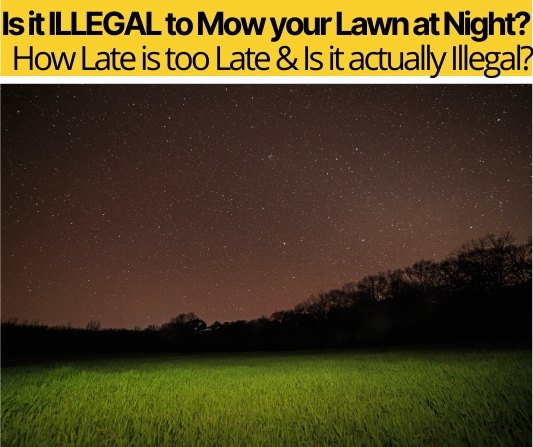 Along with fast food, retail, or babysitting, one of the few options available to teens just entering the work world is that of mowing lawns for pocket change.
Along with fast food, retail, or babysitting, one of the few options available to teens just entering the work world is that of mowing lawns for pocket change.
But what many people fail to realize is how profitable running a lawn mowing business can be if you play your cards right.
The landscaping business has grown over the past decade to be an almost $100 billion industry, supporting around 1 million workers and half-a-million small businesses.
So, how much should you charge for each lawn mowing job if you want to make a living?
How Much to Charge for Lawn Mowing
Most other lawncare businesses usually charge around $30-$60 per mowing job. If just starting out or you are Kid/Teenager with no real expenses, you can start charging $20-$30 per mowing job. Depending on the size of your business and the amount of overhead costs you have, you should set a minimum price that you do not go below. Your most important goal starting out is making sure that your business is making enough money to both pay for your overhead costs while still earning a profit.
If you are just a kid who want’s to start a side-gig and do not have any capital expenses(If you can borrow a lawnmower or use the one your parents already have and only cover your local area where you can just walk from customer to customer) , you can charge even less (the mentioned $20-$30) to get your few very first customers and most importantly get the hang of it. After you have made your very first money you can re-invest this,start charging more,land mowing jobs farther from your home or even hire a friend to help your business take off even more.
Lawn Mowing was my first real business,I started with a rusty lawnmower my father had given me, in a couple of years I had 4 of my friends working for me, by the time I was 18 I started expanding in other areas of yard maintenance and rest is history. In this article we will see how much does it costs to start a lawn mowing business decently and how much exactly to charge for your work to start making decent money whatever you are an Adult thinking of building a lawn care business or just a kid who wants to make his own money.

How much does it cost to start my lawnmowing business?
The first thing you need to do is make sure you have enough money to get the essentials: a lawn mower, weed eater/string trimmer, a leaf blower, and a tool kit. Let’s assume that you already have a safe place to keep your equipment, a shed or garage, and reliable transportation in the form of a 2019 Ford F150 – a much cheaper/older car or no car at all at start will do just as well but let’s take this as an example. Here are some of the average costs for the above items, purchased brand new (be on the lookout for used products in good condition online, though).
Push Mower: $100-$400
Weed Eater/String Trimmer: $100-$200
Leaf Blower: $130-$300
Small Engine Tool Kit: $40-$200
For those with deep pockets or for rapidly growing businesses, a riding mower and/or a trailer for carrying bigger equipment is probably a good idea as well.
Riding Mower: $1,500-$3,000
Trailer: $1400- $14,000 (enclosed trailers are often really expensive, open trailers less so)
Also Read: How Late & Early Can you Mow Lawn
Overhead costs
Every industry is competitive, but lawn care is especially so, since it’s an environment with many competing local businesses. Since you’re a rookie and there are other businesses in your area who may have more experience and better equipment than you, it might be tempting to charge ridiculously low prices so you can get customers. This might seem okay at first but remember that landscaping requires constant other payments, called overhead, in order to stay afloat. Gas prices for your equipment and your vehicles, supplies for keeping your equipment clean and running smoothly, paychecks for other employees if you have them, and so on, not to mention taxes. If your fees only cover your overhead, you won’t have any money to pay rent or buy groceries, and your business will essentially eat itself alive.
About how much would my overhead costs be?
Going off the above starting funds example, here are the typical overhead costs that someone living by themselves would have to deal with on a regular basis:
Monthly
Average Rent in USA = $1,180
Average Amount Spent on Groceries for One (according to Fox Business) = $255
Weekly
Current Average price for a full tank of gas for a 2019 Ford F150: ~$64
Current Average price to fill a five-gallon jerry can (for small engines): ~$10
Occasional
Price for an 18 fl. oz. bottle of 30 SAE Briggs & Stratton Motor Oil: ~$5
Replacement Blade for a Toro Push Mower: $20
Weed whacker string (3-pack): $22
So, that would mean that, on average, you would need to pay around $1,435 per month for food and rent, about $134 a month for gas, and the occasional extra payment for replacement parts for your tools. In total, that rounds up to ~1,735 a month.
Remember, this is not an exact formula to follow, and it may cost more or cost less depending on the circumstances, If you are a kid still living in home who plans to just cover local area without a car and only plans to do lawn mowing your overheads will be mostly just limited to your mower ,Gas and occasional mower maintenance costs.
In fact I would suggest to anyone at start to STAY LEAN and not blow your money on fancy equipment as it simply is not necessary to establish yourself, however once you grow the better equipment will provide you less hassle in long term and help you grow even faster.
How much should I charge to make a profit
If your business is just you, your truck and your tools, you can settle for a slightly lower minimum price since you are only making money for yourself and your business. Something around $40-$50 per lawn, maybe a little less if you’re lucky enough to be living somewhere with lower rent. If you’ve got a bigger business, more lawns to mow, more employees to pay etc., naturally you should charge more, somewhere in the ballpark of $55-$65.
But what if I have to do extra work, shouldn’t I charge more for extra labor?
Lawns come in all different shapes and sizes, and some require more work than others. There are different models you can use in order to charge your customers so you’re getting enough money for the work you’re putting in.
Let’s say you have ten customers who need their grass mowed weekly. These include:
Customer 1: 10,500 ft2 2 hours to mow
Customer 2: 8,000 ft2 1 hour to mow
Customer 3: 15,000 ft2 2 hours to mow
Customer 4: 12,000 ft2 2 hours to mow
Customer 5: 20,000 ft2 3 hours to mow
Customer 6: 6,000 ft2 1 hour to mow
Customer 7: 14,000 ft2 2 hours to mow
Customer 8: 17,000 ft2 2 hours to mow
Customer 9: 4,000 ft2 30 min. to mow
Customer 10: 9,000 ft2 1 hour to mow
Charge per hour
Set a minimum price, let’s say, $40, your customers must pay for you mowing their lawn (that way, even if it takes less than an hour, you still walk away with some money) and charge another $5 for every hour additional hour of labor. Customers with smaller properties won’t feel like they’re paying too much, and you can make a tidy profit off of overgrown lawns or those with much more acreage.
Customer 1: $50
Customer 2: $45
Customer 3: $50
Customer 4: $50
Customer 5: $55
Customer 6: $45
Customer 7: $50
Customer 8: $50
Customer 9: $40
Customer 10: $45
This would earn you $480 a week, $1,920 a month, $23,040 a year, give or take for taxes. Subtract rent, groceries, two full tanks of gas and one full jerry can, and you have $347 left over to put in savings each month, for a yearly total of $4,164 to put in savings.
Charge per # of Square Feet:
This is helpful for more persnickety customers who want to know exactly what they’re paying for without any “fine print.” You should set a baseline payment, again, let’s say $40, so those with very small lawns are still paying you for your labor, and then add more in small increments depending on how big their lawn is. For example, for every 5000 square feet, you could add five dollars, so someone with 5001-10000 square Feet would pay $45, 10001-15000 would pay $50, 15001-20000 would pay $55 etc. Keep in mind, that’s only an example and not a model to be followed.
That way, it would be:
Customer 1: $50
Customer 2: $45
Customer 3: $50
Customer 4: $50
Customer 5: $55
Customer 6: $45
Customer 7: $50
Customer 8: $55
Customer 9: $40
Customer 10: $45
Which totals to $485 a week or $1,940 a month, and $23,280 a year, give or take for taxes. Subtract rent, a month’s groceries, two full tanks of gas and a full jerry can of gas and you end up with $367 a month to put in savings, or $4,404 in savings a year.
What about big commercial properties?
Properties like schools and industrial lots take a lot more time and effort to mow. I would advise that you keep your price ranges the same and allow the formulas above to help you earn more money from doing more work. Remember, just because a company has more finances than a household doesn’t mean that they’re any more willing to spend their money, and they can always take their business elsewhere if they think you’re charging too much. I would also advise you to not mow commercial properties if you’re just one person unless you have a riding mower, but even then you might want to wait until you have more workers so you can get the job done without spending all your energy.
What about small lawns?
An important thing to take away from this article is to never work for free. Small lawns don’t have to pay the extra charges that those with more acreage do, but you should never drop your minimum price for paying customers. If you want to mow your friend’s or family’s lawn for a discount, you might be able to get away with it, fine, but only if you know you’re going to have enough money to pay for your overhead costs.
Is it possible to make a living only cutting grass?
As shown in the formulas above, it is very much possible to make a living cutting grass if you play your cards right. While not exactly a glamorous lifestyle, you can make around $23K a year if you can find yourself enough customers. So, the key here is to start small. If you’re still living with your parents (which there is no shame in, times are rough), you can settle for cutting a few lawns a week to earn enough money to contribute around the house. If you do the best job possible, your reputation will grow, you’ll gain more customers and your income will go up, and you can even afford your own place with the amount of money you’re making. Not to mention, as your skill improves you can start working on offering other services such as weed, pest and fungus control, building structures like fences and sheds, irrigation, and more!
How much money should I charge if I’m just a kid?
You should aim your prices a little lower. Remember, you don’t have to worry about big financial stuff like paying rent or buying groceries yet, and since you can’t operate the heavy machinery needed for bigger jobs, you should stick to smaller jobs in your neighborhood or wherever your parents are willing to drive you. As such, aim for something a little smaller like $20-$30.
What if I’m a teenager?
Your independence can help you gain more customers, but I would still recommend that you keep your prices a little lower than the professionals, somewhere in the ballpark of $30-$40. Not that you’re any less skilled than adults, but you have to keep in mind that you’re still living with your family and don’t have to worry about rent or utilities. If you have your driver’s license, you can reach a broader array of customers in your area without having to rely on your parents, and that in turn can give your more spending money to hang out with friends, take your significant other on a date, or save up to get that laptop or game console that you’ve been eyeing.
Is it ever illegal to mow lawns for money if I’m a kid?
Short answer, no, it’s not illegal, but you need to make sure you’re paying your taxes if you need to. According to the IRS, lawn mowing counts as a kind of self-employment, and you are required to pay income tax. Not only this, but you also need to pay self-employment tax if your earnings are $400 or more. It’s also important to keep in mind that some cities or counties have different rules about mowing lawns for money, although this is quite rare. It’s always a good idea to look it up on your state government’s website.
Do I need a license to start a lawncare business?
Starting a lawnmowing business as an adult is also perfectly legal as long as you do your homework. You must report your income to the IRS and pay income taxes just like any other business or job. Whether or not you need a state license to perform basic lawn care (grass cutting, tree trimming etc.) depends on what state you live in, some states require that you have a business license, some don’t. However, most states require a license for any business that uses pesticide or fertilizers. This usually requires you to have a certain amount of prior experience working with the relevant chemicals and to pass an exam.
This is a difficult time we’re all living in, and a lot of us, young and old, have been left in need of jobs. That’s why the lure of an industry that welcomes just about everyone like lawn mowing is so appealing. It’s tricky to get into, though, and I definitely don’t recommend dropping whatever you’re doing and hitting up the Home Depot for the latest riding mower. Planning on mowing lawns for a living takes money, planning, patience and experience, but if you make yourself known to your area, plan your savings and projects carefully, and work your hardest, you just might be able to turn what was once a summer gig for spending money into a full time job.






